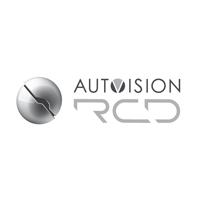SAN FRANCISCO, CA (Sept. 10, 2014) – The do-it-yourself movement is transforming cities with invention-focused Maker Faire events, growing entrepreneurship, and a new Toyota concept to fit these trends. Inspired by a growing innovative spirit in urban areas, Toyota revealed today the Urban Utility concept vehicle – or U2 – at a private panel discussion hosted by Make: magazine in San Francisco. Vehicle elements reflect the lifestyle and needs of an entrepreneurial, urban driver discovered through interviews with Maker Faire participants and internal Toyota market research.
Developed by Toyota’s Calty Design Research in Newport Beach, California, the Toyota U2 concept features a new open architecture and purposeful materials that redefine urban utility. Designers included the ability to roll back the roof, fold down the tailgate into a ramp and customize the interior on a versatile rail system. The concept car will make its first public appearance at World Maker Faire in New York City on Sept. 20 and 21.
“Toyota saw an opportunity for a new approach to an urban vehicle based on increasing re-urbanization of our cities and urban drivers’ desire for flexibility, fun and maneuverability,” said Kevin Hunter president of Calty, Toyota’s North American design studio. “Calty keeps a number of projects concealed while exploring ideas and products. Revealing a project like the U2 gives people a window into the constant innovation that happens inside Toyota and our Calty studios and one possible future for urban mobility.”
Bringing the concept to a Maker community event allowed Toyota to gain feedback from a key audience.
“As more products are developed expressly to appeal to Makers and their deep appreciation of design esthetic combined with open architecture and practical utility, we expect to see more trusted brands like Toyota take an unconventional approach to not only product development but their marketing and launch strategies,” said Sherry Huss, VP and co-founder of Maker Faire. “Leveraging the growing Maker movement and Makers’ broad sphere of influence can impact the success of consumer brands and future products.”
Customizable Interior
Among the U.S. trends that influenced the Calty design team were a growth in entrepreneurship and Americans’ love of adventure, especially outdoor activities involving gear and equipment. Drawing on these insights, the Toyota U2 concept is a flexible, functional gadget that owners can customize according to individual, on-the-go needs. The retractable utility bar can serve unique uses, such as holding a desk or grocery bag hooks. Side windows flip up for easy access from roadside.
Other key interior highlights include:
Versatile utility rail system configurable to hold everything from baskets to bike stands
Ability to fold and remove the front passenger seat
Fold-up rear seating
Unique shifter design with intuitive switch for parking, drive and reverse mode
Choice among a selection of colors and materials to fit needs
Toyota research showed the fast-growing small SUV segment points to a desire for greater utility but a smaller vehicle footprint. The Toyota U2 concept is the size of a compact car with the functionality of a compact truck and the spaciousness of a cargo van. It satisfies other key urban driver priorities including good fuel economy, maneuverability in city environments and easy loading and unloading.
An Exterior for the City
City streets call for a vehicle that can handle bumper-to-bumper traffic, potholes and tight corners. The Toyota U2 concept has an extremely durable underbody and tool-like exterior with a customizable side panel. The iconic, modern design remains playful, with details such as circular door handles and a slightly chunky proportion. The box-like design at the rear emphasizes the storage capabilities.
Highlights of the exterior include:
- Roof panels that retract open
- Rear glass that can slide into the tailgate
- Tailgate that folds down into a ramp
- Protective, replaceable ridges on tailgate
After its public reveal in New York, the Toyota U2 concept will return to the Calty studio in California. For more information about Toyota innovation, visit http://www.toyota.com/usa/operations/design-research-development.





















Thanks for sharing. I read many of your blog posts, cool, your blog is very good. https://accounts.binance.info/register?ref=P9L9FQKY
Your point of view caught my eye and was very interesting. Thanks. I have a question for you. https://www.binance.com/ar-BH/register?ref=V2H9AFPY
Your article helped me a lot, is there any more related content? Thanks!
Can you be more specific about the content of your article? After reading it, I still have some doubts. Hope you can help me.